Australian Pain Society NEWSLETTER


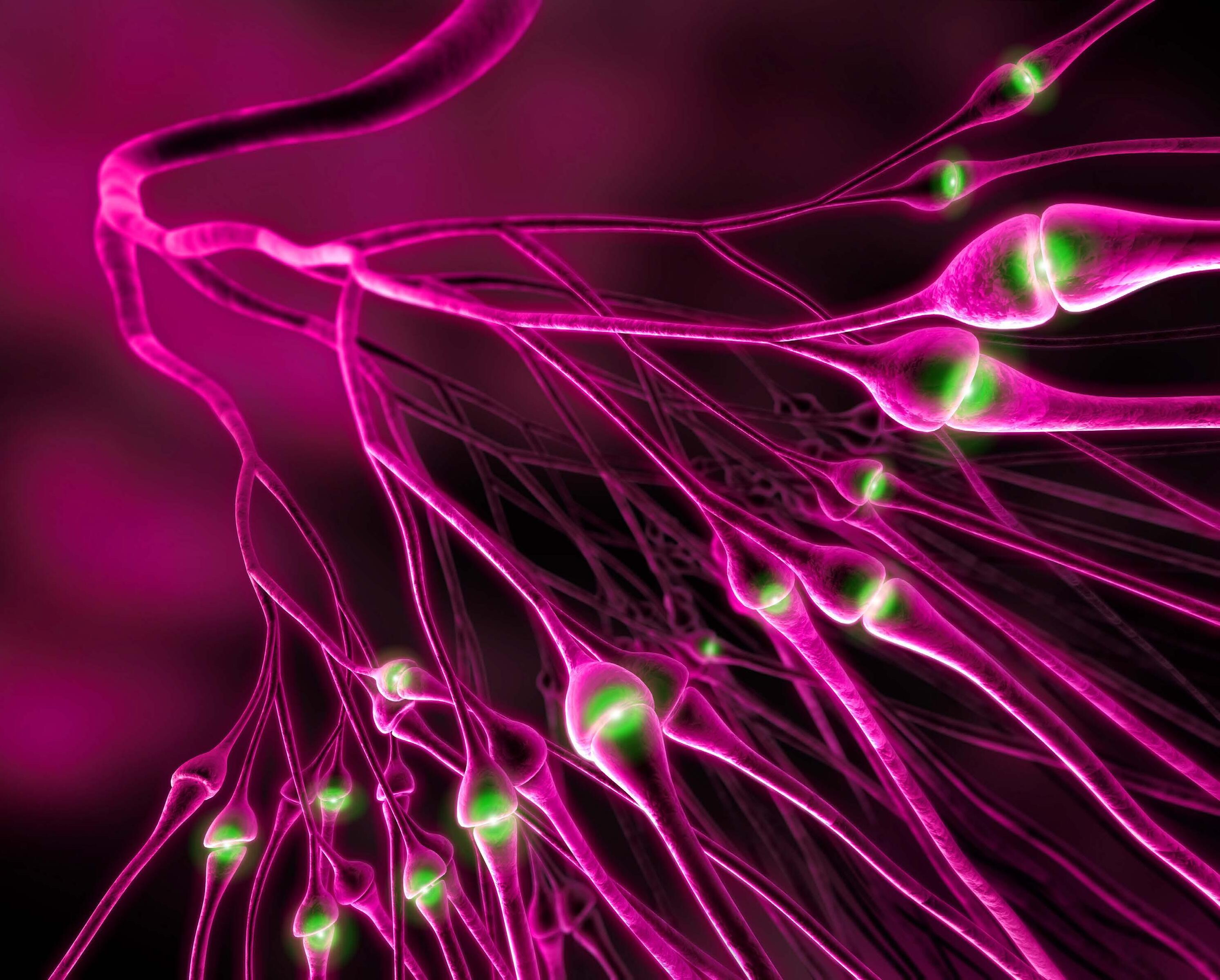






Hi everyone, the year is indeed progressing fast and I am sure you would all agree that our thoughts and prayers are with all APS members who have been negatively impacted by the current pandemic.
We have an action-packed newsletter for you all. Great news, the APS conference will be delivered in a flexible format. This is a terrific method to increase exposure, and a wonderful way to increase impact. Abstract and workshop submissions are now open. If you have a great idea for a pre-conference workshop, propose a topic and share your knowledge with our APS community.
Know a rising pain researcher who is a star?
Nominations are now open for 2021 and now is the time to get your proposals in. Check out the interview by Dr Lincoln Tracy with our APS 2020 rising star recipient Dr Samuel Robinson.
It is great to be able to showcase some new publications by our APS members in this newsletter. Checkout the systematic review of randomised trials on deprescribing opioids in chronic non-cancer pain by Mathieson et al. (2020) and their findings on how patient focused deprescribing interventions did not increase the risk of both serious adverse events, and adverse events. The recent publication by Schmid, Fundaun and Tampin (2020) on entrapment neuropathies is proposing an argument for how contemporary management should be personalised, and the requirement of consideration for the multidimensional profile of an individual patient is a must read article. Also the systematic review and metaanalysis by Xie et al. (2020) on comparing central pain processing in individuals with non-traumatic neck pain and healthy individuals is another must read article. Their findings
Dr Joanne Harmon
of moderate-quality evidence of mechanical hyperalgesia at remote nonpainful sites in patients with nontraumatic neck pain compared with controls that is indicating altered central pain processing is of great interest. The BPR (Basic Pain Research) SIG Journal Watch report is in by Iredale & Graham (2020) and they share their discovery on the presence of analgesia network in the emotional brain during general anaesthesia. Highlighting not only the importance of basic research into fundamental mechanisms, but also paving the way for its use in new dimensions for future translation such as pathological pain. It is such a fabulous opportunity to be able to communicate on recent publications by our members, and our readers are asked to please be mindful to share their articles as they come to hand as well. The BPR SIG is also proud to launch their “BPR Pain Hour” online forum, see inside for details.
Until next time, take care
Joanne HarmonWow – not sure about others but I can’t believe how fast this year is racing past. My thoughts and prayers are with all APS members who have been negatively impacted by the current pandemic; particularly those in Victoria over recent weeks. I’ve personally reached out to many of our Victorian members and I’m both heartened by their response and humbled by their resilience. As I’ve said before, we are stronger together, and current times are definitely a testament to that!
As always, I’ll provide my report as an update against our 2019-2021 strategic plan.
Education planning has been BUSY! Last month we launched our first ever webinar in which we were proud to bring you the wonderful Professor John Cryan. We are keen for your feedback, so if you haven’t already completed the short survey please do so. Our plans for the 2021 Annual Scientific Meeting (ASM) are also in full swing and we stand ready to deliver the conference in whatever format is the most appropriate at the time; face to face, hybrid, or virtual. With a view to expanding our educational repertoire, we have begun developing flexible training sessions around the fundamentals of pain management and pain management in aged care. We are thrilled to welcome Dr Dan Harvie to the APS Education Committee to help with these projects. We are also continuing to plan for the launch of painSTAR (Pain School for Translation And Research) in November 2021 and we thank Professor Michael Nicholas for his advocacy to IASP on behalf of APS. Health and travel restrictions will ultimately determine whether the school can be launched next year but we are striving to position ourselves to be ready to do so should the public health advice permit it.
We’ve also been really busy in the advocacy space. The recent changes around opioids have caused significant distress for a large number of people and we’ve been proud to link to with several organisations around this issue. In particular, we thank Dr Tim Ho (APS NSW State Director) for his advocacy on this matter. In July we submitted our fourth and final contribution to the Aged Care Quality and Safety Royal Commission, and we await the Commission’s final report in February 2021. We were also proud to support a multi-agency bid, led by Dr Susie Lord, to strengthen the focus on chronic pain across the lifespan and on over the counter analgesic and cannabinoid medication use in the 2022 National Health Survey. We’ve also been connecting with our colleagues in the Australian Psychological Society to support their efforts to focus a spotlight on pain in this years’ National Psychology Week (8-14 November). Associate Professor Kevin Keay (Chair, APS Scientific Planning Committee) and I were also thrilled to link recently with Professor Karen Davis (President, Canadian Pain Society) and Dr Loren Martin (Chair, CPS Scientific Program Committee) to discuss all things related to society management and ASM planning in pandemic times. For those who haven’t seen my Twitter feed (@anne_burke), I am constantly in awe of the international collegiality that’s shown across the pain sector and I am ever grateful to be part of this wonderful community.

The first of our Waiting in Pain 2 (WIP2) publications has been submitted and is currently under review. We look forward to announcing the next round of funding for the APS/APRA/CFK Clinical Research grant in the near future and are eagerly awaiting the launch of ‘BPR Pain Hour’; a free monthly online forum
brought to you by members of the APS Basic Pain Research (BPR) SIG to promote research dissemination and support early career researchers. Huge props to the BPR SIG for this bringing this exciting new initiative to our members.
Dr Laura Prendergast has led a stellar group of psychologists to revise and update our position statement on the role of psychology in the management of persistent pain. This should be completed in the next few months and will be presented to the membership at our AGM/ GBM in April next year. We are also advancing our plans to release an e-version of our ‘Pain in Residential Aged Care Facilities’ book and we thank the publishing team at NOI for their expert guidance and collegial support.
The APS Board has a strong focus on refining member benefits. To that end, over the past few months we have:
• Made our inaugural APS webinar free for members;
• Secured an APS member discount for the APA Level 1 pain course;
• Negotiated discounted registration to other high-quality pain education resources (more details coming soon);
• Worked with our BPR SIG to bring you ‘BPR Pain Hour’; and
• Solidified plans to increase our educational offerings.
We have had to work quite hard on this front recently due to an injury in the APS virtual office. We all wish Kristy Gorenc a speedy recovery and thank Sunny Sun for her early return from maternity leave to support the activities of the APS Secretariat. We also sincerely thank Tracy Hallen for her unwavering energy and commitment to APS!
I trust this gives you a brief overview of the happenings in the APS office recently. As always, I’m happy to field questions or receive feedback from members so please don’t hesitate to reach out if there’s something you’d like to discuss.
Until next time…
All the best Anne
The Australian Pain Society is 100% committed to bringing you a conference in 2021.
Generally speaking, the APS expects accepted authors and presenters to attend the conference and present their abstract in person. Should this not be possible in 2021 due to COVID-19 related travel restrictions, the APS will work with you to convert your presentation to be streamed via an online platform.
No matter the format, we will make sure all delegates have an opportunity to network, collaborate and learn.
Please submit your valuable contributions with full confidence that the APS will do whatever needs to be done in order to deliver the ASM in the safest possible way in April 2021.
Do not miss your opportunity! Submit now!
www.dcconferences.com.au/aps2021
Submissions open!
Submission Deadline: Monday 28 September 2020
The Scientific Program Committee (SPC) and the Local Organising Committee (LOC) for the 2021 Australian Pain Society 41st Annual Scientific Meeting invites the submission of topical sessions.
For the submission instructions and the submission portal please click here
Should you have any queries regarding your submission or the process, please contact the Conference Secretariat.
We look forward to receiving your submissions!
Submissions open!
Submission Deadline:
Tuesday 27 October 2020
The Scientific Program Committee (SPC) and the Local Organising Committee (LOC) for the 2021 Australian Pain Society 41st Annual Scientific Meeting invites the submission of abstracts on original work. Abstracts can be submitted for consideration for an oral or a poster presentation.
Please note the following points regarding the submission process:
• The submitting author MUST be the main author and the person who will present the work at the ASM.
• Expressions of Interest (EOI) for travel grant applications are also being collected as part of the submission process
• Abstracts published as a digital presentation as part of APS 2020, can be resubmitted for inclusion in the APS 2021 program.
For further information, an abstract template and the submission portal please click here
Clinical Practice & Service Delivery (Poster Only)
For further information, an abstract template and the submission portal please click here.
For further information, an abstract template and the submission portal please click here.
Delegates wishing to apply for a PhD / Nurse / Allied Health Professional (AHP) travel grant must:
• be an APS Member
• be the major contributor and submitting author of the abstract
• complete the PhD / Nurse / AHP Travel Grant section of the abstract submission process
• complete and submit the travel grant application form
For further information, to ensure you meet the terms and conditions for travel grant applications and to complete the travel grant application form, please click here.
To view the abstract submission guidelines please click here
Now accepting applications!
Submission Deadline:
Monday 28 September 2020
This award showcases rising star pain researchers in Australia, and may be awarded annually subject to the application of suitable candidates. The Rising Star Winner will receive a return domestic airfare, accommodation, and complimentary registration to attend the 2021 APS 41st ASM where they will give a plenary presentation to showcase their work and ideas.
Applications are now open, for further information and to apply, please click here.
• Nominees must hold a PhD and be within 5 years of conferral by the deadline of this award application.
• Applicants can be working in any field of pain research, including basic science, biomedical, clinical, and other applied or crossdisciplinary sciences.
• The selection committee will consider personal or extenuating circumstances that might provide grounds for consideration if the above eligibility criteria are not met.
Please include details in the nomination form such as:
• Time out for maternity/parental leave/carer’s leave/illness
• Significant breaks in research time (e.g., due to clinical work, reduced research-focused post-doctoral employment)
• Pro rata (so relative to opportunity for those working as clinicians or teaching/research posts)
– Only individual scientists are eligible (not research teams)
– Applicants must be available to attend APS 2021, and to deliver the Rising Star presentation
– Applicants must be a member of the APS
– Applicants must be an Australian citizen/ resident, currently working in Australia and have spent at least two post-doctoral years in Australia, or have returned to continue working in Australia
This award will be based on excellence in painrelated research achievement, demonstrated from the applicant’s track record, including:
• Specific research achievements or discoveries
• Research impact/application
• Collaboration achievements – independent of your supervisor
• Publication record (quality and impact of publications; e.g., H-index, standing of journals, citations)
• Grants obtained (as a Chief Investigator)
• Patents held
• Peer recognition: Awards or prizes, national profile, international profile.
For further information and to apply, please visit the conference website
We look forward to receiving your submission!
Submission Deadline:
Wednesday 28 September 2020
The Scientific Program Committee (SPC) and the Local Organising Committee (LOC) invite the submission of half-day Pre-Conference Workshops for inclusion in the program on Sunday 18 April 2021.
This is the first time this opportunity has become available and we look forward to receiving submissions for a 3-hour Workshop.
• If accepted, the submitter of the Workshop will be in charge of coordinating all speakers.
• Workshop speakers will receive a complimentary registration to the Workshop.
• Further guidelines will be made available to you, if/once your Workshop is accepted.
To submit your Workshop, please click here and complete the form.
Once completed, it can be returned to the APS 2021 Conference Secretariat via aps2021@dcconferences.com.au by Monday 28 September 2020.
The accepted Workshop will be included on the APS 2021 conference website, will be marketed alongside the other 6 workshops being held on the Sunday, and will be included in the online registration form.
We look forward to receiving your submission!
The Board of Directors is seeking nominations from all Australian Pain Society (APS) members for candidates to be considered for the Distinguished Member Award/s to be presented at the APS 41st Annual Scientific Meeting to be held in Canberra from 18-21 April 2021.
Candidates must be APS members who generally have had a lengthy career in the field of pain and have:
• Made major contribution1 towards the Society, and
• Significantly contributed to the science of pain management, and/or
• Played a significant clinical, educational or research role in the field of Pain Management in Australia.
1 Major contributions include, but are not limited to:
– Scientific Program Committee involvement
Pain research
– APS projects
– Subcommittee involvement
– Board liaison
– Contributions to ASM presentations
• A ‘Nomination for Distinguished Member Award’ form must be completed.
• As a guide, it is desirable that nominees have held continuous APS membership for over 10 years.
• Nominations must include an 800-900 word biography of the nominee. The Board will not consider incomplete nomination forms.
• Unsuccessful nominations are not automatically put forward in subsequent years.
• The nominator must be prepared to present a brief summary of the Distinguished Member biography in the ASM program, or arrange a suitable alternate for the presentation segment.
• All nominations to be submitted to the APS Secretariat by 31 October 2020.
• The APS Board will notify successful nominees by 31 December 2020.
• Distinguished Member recipients are actively encouraged to attend the Annual Scientific Meeting in order to receive their award in person from the APS President.
A listing of past recipients of the Distinguished Member Award, including their biographies, can be found on the APS website.
Samuel Robinson, PhD, is a postdoctoral research fellow at the Institute for Molecular Bioscience, University of Queensland, Australia. He completed his PhD with Raymond Norton at Monash University, Melbourne, Australia, and returned to Australia in 2017 after finishing a postdoc with Baldomero “Toto” Olivera at the University of Utah, Salt Lake City, US. Robinson recently won the Australian Pain Society’s Rising Star Award for 2020, which showcases up-and-coming pain researchers in Australia. Like many academic conferences, the 2020 Australian Pain Society

40th Annual Scientific Meeting, where Rising Star Award winners give a plenary presentation to showcase their work, was unable to proceed due to the COVID-19 pandemic. However, Robinson recently spoke with Lincoln Tracy, a research fellow at Monash University, via Zoom. Robinson discussed his journey to pain research, his work on new plant and animal toxins that can be used to identify novel pain targets, what winning the Rising Star Award means to him, and much more. Below is an edited transcript of their conversation.
I guess my earliest memory of science is collecting bugs in the backyard – I was one of those kids [laughs]. So I think I’ve always been inclined that way, to an extent. I’m fortunate that I’ve turned what I used to do for fun as a fouryear-old into a job.
I’m passionate about biology – the study of life. When I was at university, I studied neuroscience as an undergraduate. I essentially chose neuroscience because it was the hardest course
Samuel PhDto get into – no other reason than that. I learned a lot about neuroscience during the degree and got a job in a laboratory after my honors year. During my time in the lab I was using a range of different toxins as tools to understand neurophysiology. I thought getting to use these naturally derived toxins as tools was really cool.
It was around this time that I decided I wanted to do a PhD. The toxin-related work really appealed to me and inspired me to write a proposal for a PhD. I sent my proposal around to a few labs that looked like they would accommodate this type of research. I accepted a scholarship from Monash University to do a PhD studying toxins from cone snails with Ray Norton.
Following my PhD, I did a two-year postdoc with Toto Olivera at the University of Utah, where I continued working on neurotoxins from venoms. At this point I wasn’t specifically studying pain, but a large portion of the lab’s work used mammalian sensory neurons to identify targets for the toxins the lab was working with.
When I came back to Australia in 2017, I wanted to start my own research program. I had developed a range of neuroscience skills and knew a lot about toxins by this point, or at least I thought I did. I wanted to pursue my passion for toxin research, but I needed to find a niche. So I wrote a research program to look for toxins that cause pain. No one had been really interested in that topic because there are no direct applications for a pain-causing toxin – not in medicine, anyway.
You can probably split my research into three aims. The first is to build a library of paincausing toxins. I’m doing this by searching animal venoms – the things that sting and that we know hurt. We know that there are different kinds of pain that people experience from these
This article was originally published on Pain Research Forum
venoms, and so I want to build a library of toxins that cause pain by acting on our nervous system. The second aim is to then see how these toxins work – to figure out what they target and how they cause pain. Then, ultimately, the third aim is to understand how the targets of the toxin contribute to normal pain perception in humans as well as to pathological pain states.
How many toxins have you identified so far?
Given that there are thousands of venomproducing species and probably thousands of different chemical strategies they can use, there’s basically an infinite number of toxins to identify. I can’t look at all of them, so I’ve been focusing on Hymenopterans – bees, ants, and wasps. No one has really looked at their venom before in much detail, and there is a huge amount of diversity amongst these species. I’ve found dozens of new pain-causing toxins just from these animals.
Were there any other factors that contributed to your decision to focus on bees and wasps?
Bees and wasps are probably the best studied from a qualitative perspective, in terms of the pain that you experience. This work has primarily been done by Justin Schmidt, an American entomologist, who has spent 40 years studying Hymenopterans. During his studies he noticed that there were differences in the types of sting pain that he experienced, and he eventually started recording this information and writing descriptions of the different stings. In 2018 he published The Sting of the Wild, where he explained all these experiences. It’s a great read. But my point is that he noticed there was a huge diversity in the experiences of the stings, which implies a diversity of chemical or pharmacological strategies being used by these animals. He had built this framework for me to start from; I just needed to go on and do the chemistry and pharmacology. That was a real drawing card. I’ve since reached out to him, and he has become an important collaborator for me.
How else can these toxins be used to improve our understanding of the human body?
When I initially came into the field of toxicology, I was using toxins to study the ion channels involved in long-term potentiation and memory. One of the great things about toxins is that they are often very selective, which makes them great tools for delineating specific ion channels and receptors. So they can be used in neuroscience to study the central nervous system, and since many toxins target the blood or the heart, they are also used in studying the cardiovascular system. They’ve also been critical in understanding the neuromuscular junction.
Within your line of research, what do you hope to know in five to 10 years that we don’t currently know?
My hope is that I will find that there are more – and better – pain targets than just opioid receptors. And I think we are starting to realize that this is going to be the case. We have identified a few toxins that target different ion channels and receptors, which tells us that these alternative targets are important in pain sensation.
What has been the most interesting study you have been involved with over your career?
The most interesting one was probably at the end of my PhD when I was heading over to Utah for my postdoc. I was already working with that team, and we discovered that some cone snails hunt and paralyze fish before eating them. When we looked at the venom from one species of cone snail, we came across something that looked like insulin. It turned out to be extremely similar to fish insulin. We were wondering, “What on Earth is insulin doing in there?”
We investigated this further and found an old YouTube video of an endocrinology lecture where someone dropped a fish in a bucket of insulin. The fish was knocked out and flipped belly-up straight away; it had gone into a sugar coma. When he took the fish out and put it back in normal water, it recovered.
What this said to us is that you could just apply the insulin to the local water around the fish; you didn’t even need to inject it. When we investigated the structure of the insulin, we noticed that the insulin in the cone snail toxin was structurally different from normal insulin. This difference meant that it could act on the fish straight away; there was no delay in action. This also means that it could potentially be valuable as a quick-acting drug for diabetes.
What does winning the Australian Pain Society Rising Star Award mean to you?
I hope that it will help my chances of getting fellowships and grants in the future, as this sort of award makes a big difference in those applications. It was also going to give me the fantastic opportunity to speak to a broad audience of Australian scientists in my field [before the annual conference was cancelled]. I’m hoping that I will be able to speak at next year’s meeting, so that I can still have the opportunity to share my research and out-ofthe-box approach to studying pain with other scientists in Australia.
What advice would you like to pass on to other young investigators?
First, never let yourself be limited by what you think you can do; I feel like I’m constantly learning new things! Second, if you do have a problem, there is almost always a solution. The solution might not always be obvious, but if you surround yourself with good mentors and are open with them about your research, you can often find a solution pretty quickly.
Lincoln Tracy is a postdoctoral research fellow in the School of Public Health and Preventive Medicine at Monash University and a freelance writer from Melbourne, Australia. You can find him on Twitter @lincolntracy.
Fish-hunting cone snail venoms are a rich source of minimized ligands of the vertebrate insulin receptor.
Ahorukomeye P, Disotuar MM, Gajewiak, Karanth S, Watkins M, Robinson SD, Flórez Salcedo P, Smith NA, Smith BJ, Schlegel A, Forbes BE, Olivera B, Hung-Chieh Chou D, Safavi-Hemami H.Elife. 2019 Feb 12;8:e41574
The Sting of the Wild Schmidt JO
John Hopkins University Press, USA, 2018.
Insulin as a weapon
Robinson SD, Safavi-Hemami H. Toxicon. 2016 Dec 1;123:56-61.
Specialized insulin is used for chemical warfare by fish-hunting cone snails
Safavi-Hemami H, Gajewiak J, Karanth S, Robinson SD, Ueberheide B, Douglass AD, Schlegel A, Imperial JS, Watkins M, Bandyopadhyay PK, Yandell M, Li Q, Purcell AW, Norton RS, Ellgaard L, Olivera BM. Proc Natl Acad Sci U S A. 2015 Feb 10;112(6):1743-8.
Thank you to APS member Stephanie Mathieson and her colleagues Christopher G. Maher, Giovanni E. Ferreira, Melanie Hamilton, Jesse Jansen, Andrew J. McLachlan, Martin Underwood, Chung-Wei Christine Lin. for sharing the following recent publication.
Article first published online: 1 August 2020
Journal Reference: Mathieson, S., Maher, C.G., Ferreira, G.E. et al. Deprescribing Opioids in Chronic Non-cancer Pain: Systematic Review of Randomised Trials. Drugs (2020).
DOI: 10.1007/s40265-020-01368-y
Link: https://link.springer.com/ article/10.1007%2Fs40265-020-01368-y
Background
Deprescribing, the process of reducing or discontinuing unnecessary or harmful medicines is an essential part of clinical practice.
Aim
To evaluate the efficacy of interventions designed to deprescribe opioid analgesics for pain relief in patients with chronic non-cancer pain.
Methods
We searched electronic databases, including clinical trial registries, from database inception to 13th January 2020 without restrictions, and conducted citation tracking. Our systematic review included randomised controlled trials (RCTs) evaluating interventions reducing the prescription, or use of opioid analgesics in patients with chronic pain versus control. Inventions could be aimed at the patient, clinician, or both. We excluded trials
enrolling patients with cancer or illicit drug use. Two authors independently screened and extracted data. Outcome follow-up timepoints were short (≤ 3 months), intermediate (> 3 but < 12 months) or long (≥ 12 months) term. Primary outcome was the reduction in opioid dose [morphine milligram equivalent (MME) mg/day]. Methodological quality was assessed using the Cochrane Risk of Bias Tool.
We included ten patient-focused RCT interventions (n = 835; median 37 participants) and 2 testing clinician-focused interventions (n = 291 clinicians); none at low risk of bias. Patient-focused interventions did not reduce opioid dose in the intermediate term [e.g. dose reduction protocol, mean difference (MD) 19.9 MME, 95% CI 107.5 to 67.7], nor did they increase the number of participants who ceased their dose, or increase the risk of serious adverse events or adverse events. One clinician intervention of education plus decision tools versus decision tools alone reduced the number of opioid prescriptions (risk difference (RD) 0.1, 95% CI 0.2 to 0.1), dose (MD 5.3 MME, 95% CI 6.2 to 4.5) and use (RD 0.1, 95% CI 0.1 to 0.0) in the long term.
The small number of studies and heterogeneity prevented firm conclusions to recommend any one opioid analgesic deprescribing strategy in patients with chronic pain.
Declaration
Declarations
Funding SM and JJ received funding from the Sydney Medical School, The University of Sydney, from a Public Health Research Collaboration Scheme to assist in data extraction to the value of $4000.
SM, GF, MH, JJ report no conflicts of interest. CM is funded by an NHMRC Senior Research
Fellowship. He is chief investigator or coinvestigator on multiple previous and current research grants from government agencies and charities in Australia and internationally. He has received travel expenses for speaking at conferences from the professional organisations hosting the conferences. He is an investigator on the SHaPED trial which received heat wraps at no cost from Flexeze. AM has received untied research funding from GlaxoSmithKline to the Sydney Pharmacy School for a postgraduate student scholarship under his supervision. MU is chief investigator or co-investigator on multiple previous and current research grants from the UK National Institute for Health Research, Arthritis Research UK and is a coinvestigator on grants funded by the Australian
NHMRC; he is an NIHR Senior Investigator. MU has received travel expenses for speaking at conferences from the professional organisations hosting the conferences. MU is a director and shareholder of Clinvivo Ltd that provides electronic data collection for health services research and is part of an academic partnership with Serco Ltd related to return to work initiatives. MU is a co-investigator on two NIHR funded studies receiving support in kind from Stryker Ltd. MU has accepted honoraria for teaching/lecturing from CARTA; was an editor of the NIHR journal series, and a member of the NIHR Journal Editors Group, for which he received a fee; and a co-investigator on an NIHR funded trial of opioid withdrawal ISRCTN49470934.
Thank you to APS member Brigitte Tampin and her colleagues Annina Schmid and Joel Fundaun for sharing the following recent publication.
Article first published online: July/August 2020 (Volume 5, Issue 4)
Journal Reference: PAIN Reports
DOI: http://dx.doi.org/10.1097/PR9.0000000000000829
Link: https://journals.lww.com/painrpts/ Fulltext/2020/08000/Entrapment_ neuropathies__a_contemporary_approach.4.aspx
Entrapment neuropathies such as carpal tunnel syndrome, radiculopathies, or radicular pain are the most common peripheral neuropathies and the most common cause for neuropathic pain. They often remain challenging to diagnose and
manage in a clinical setting. Our review provides an update on the aetiology and pathophysiology of entrapment neuropathies, based on evidence from both preclinical and clinical studies. Potential underlying pain mechanisms are brought into perspective with clinical findings. We discuss the contemporary assessment and highlight some diagnostic pitfalls. The evidence for non-invasive and surgical management of common entrapment neuropathies is summarised and future areas of research are identified.
Declaration
The authors have no conflict of interest to declare. A.B. Schmid is supported by the National Institute for Health Research (NIHR) Oxford Biomedical Research Centre (BRC). Brigitte Tampin was supported by the Government of Western Australia, Department of Health, and Raine Medical Research Foundation. The views expressed are those of the authors and not necessarily those of the NHS, the NIHR or theDepartment of Health.
Entrapment neuropathies: a contemporary approach to pathophysiology, clinical assessment, and management
Thank you to APS member Yanfei Xie and her colleagues Deokhoon Jun, Lucy Thomas, Brooke K Coombes, and Venerina Johnston for sharing the following recent publication.
Article first published online: June 19, 2020
Journal Reference: J Pain. 2020 Jun 20;S15265900(20)30036-5. Online ahead of print.
DOI: https://doi.org/10.1016/j.jpain.2020.02.007
Link: https://www.sciencedirect.com/science/ article/pii/S1526590020300365
Introduction
This systematic review and meta-analysis examined the evidence for altered central pain processing in people with non-traumatic neck pain and the relationship among central pain processing, demographics, and pain-related characteristics.
Methods
Case-control studies reporting measures of altered central pain processing using quantitative sensory testing were reviewed. Standardized mean
differences (SMDs) and 95% confidence intervals between people with non-traumatic neck pain and controls were calculated. Meta-analysis was performed using random-effects models when appropriate. Associations between SMDs with demographics and pain-related characteristics were explored on a study level using meta-regression.
Twenty-six studies were eligible with 25 included for meta-analysis. Meta-analysis demonstrated mechanical hyperalgesia at remote non-painful sites in the full sample (sample size [n] = 1305, SMD = -0.68) and in the subgroup with moderate/ severe disability (n = 165, SMD = -0.86; moderatequality evidence). Meta-regression indicated that remote mechanical hyperalgesia was negatively associated with age (R2 = 25.4%, P = 0.031). Very low- to low-quality evidence of remote cold and heat hyperalgesia and dysfunctional conditioned pain modulation were identified.
Conclusions
This review suggests that altered central pain processing is present in people with non-traumatic neck pain and may be associated with disability levels and age. However, more studies are needed to confirm findings from dynamic quantitative sensory testing.
Declaration
No conflicts of interests
Have you had an article accepted for publication this year?
Reminder that we are keen that members inform us when they have publications so that this can be shared with your APS colleagues. Please send the newsletter editor (via the APS Secretariat, aps@apsoc.org.au) the title, authors and reference (i.e. the journal, volume etc.) of the article, preferably with a short explanatory note to give our readers the gist of the article, e.g. the conclusions part of the abstract; if you would like to supply a short commentary on the article, even better.
The Australian Pain Society, like many societies, is tackling the loss of their annual scientific meeting by providing a range of new online content to engage and connect clinicians and researchers across the country.
To support these efforts, the Basic Pain Research Special Interest Group (BPR SIG) is launching a new monthly online series, known as the “BPR Pain Hour”, to showcase the latest research from Australian pain researchers, in the lead up to the Annual Scientific Meeting in Canberra, April 2021.
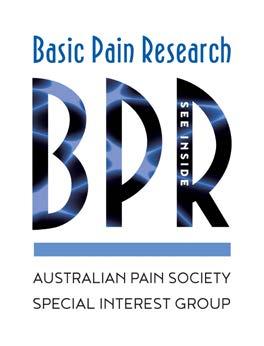
The mission of our SIG is to share, improve and promote scientific knowledge and understanding of the mechanisms of nociception and pain across all levels of investigation: from molecular and cellular analyses, to pre-clinical or clinical studies.
This forum will provide an informal platform to promote and share our research and insights, from ECRs (including students) and senior colleagues.
Summary:
With an ongoing desire for pharmaceutical companies to improve the therapeutic index of opioids, the FDA has recently approved a new synthetic opioid that is proposed to be “safer” for clinical use. This has subsequently sparked a new wave of debate around those intrinsic
properties of opioids that are most important for achieving analgesia with optimal clinical safety. Basic pain research and molecular pharmacology has an important role to play in this drug discovery discussion, by precisely defining those opioid receptor signalling processes that are important for achieving analgesia while avoiding side-effects such as tolerance or respiratory depression.
The speakers for our first session have applied new pharmacological approaches to systematically probe µ opioid receptor function, and reveal the importance (or lack thereof) of opioid analgesics to mediate processes such as ß-arrestin signalling to minimise opioid side effects. These pharmacological studies may be of interest to basic researchers and clinical researchers alike, offer new insights into those drugs that have recently been approved for clinical use, and may support future drug discovery efforts for the development of safer opioid analgesic drugs.
The invited speakers:
Prof Macdonald Christie, University of Sydney, NSW
Dr. Arisbel Batista Gondin, Monash Institute of Pharmaceutical Sciences, Vic.
All are welcome to attend, including postgraduate students.
We look forward to seeing you there, please register here
Hua, T., Chen, B., Lu, D. et al. General anesthetics activate a potent central pain-suppression circuit in the amygdala. Nat Neurosci 23, 854–868 (2020). https://doi.org/10.1038/s41593-020-0632-8

Link: https://pubmed.ncbi.nlm.nih.gov/32424286/
Reviewers: Jacqueline A Iredale and Brett A Graham School of Biomedical Sciences and Pharmacy, Faculty of Health and Medicine, University of Newcastle.
The actions of anaesthetics, producing loss of consciousness and sensory experience, are fundamental for our ability to care for traumatic injury and use highly invasive surgical procedures to treat disease without pain. The use of anaesthetics has a long history in medicine, reaching back to the first use of Ether for painless neck tumor surgery by William T. G. Morton in 18641. Yet despite this, the mechanisms underpinning general anaesthetics and the interrelationship between anaesthesia and analgesia have remained obscure. This journal watch report highlights new research in mice that has discovered a small population of nerve cells located in the amygdala, a brain region commonly associated with emotional experience. The study uses an impressive array of modern neuroscience techniques to build the case that amygdala nerve cells do respond to general anaesthetics, and represent a specific analgesic network holding great promise as a future target for analgesic treatments2
This study arose from previous research by this group, that has defined three nerve cell populations activated by general anaesthetics, found in the hypothalamus, the nucleus bed of the stria terminalis and the amygdala. These earlier experiments also succeeded in resolving a role
for the hypothalamic population (located in the supraoptic nucleus), acting by inducing slow-wave sleep during anaesthesia3. An important conclusion of this work was the existence of specific and dissociable neuronal networks responsible for different aspects of general anaesthesia. The addition now of an analgesia network highlights the complex actions of general anaesthetics on the central nervous system and the value of continuing to seek detailed mechanisms even for procedures that are well established and in routine use. The study began by using Fos, a marker protein selectively expressed in nerve cells when they are excited, and this was to identify populations activated by general anaesthetics. Confirming that an anaesthesia-sensitive population was located within the central nucleus of the amygdala and expressed GABA, giving an inhibitory action within brain circuits. Subsequent work sought to identify a genetic signature to reliably identify these cells, however, this was unsuccessful, and it was concluded several GABAergic subpopulations were likely to be involved.
Without a genetic signature to selectively manipulate the novel central amygdala anaesthesia network, all subsequent experiments used an approach termed ‘Capturing Activated Neuronal Ensembles’ (CANE) to genetically mark activated cells for experimental manipulations. Firstly CANEmediated expression of a genetically-encoded calcium indicator (GCaMP6m) were used to monitor the activity of the novel amygdala network. This experiment used surgically implanted miniature fluorescence microscopes positioned to focus on central amygdala nerve cells while animals underwent general anaesthesia. This experiment showed substantial overlap of the amygdala cells activated by multiple general anaesthetics including; isoflurane, ketamine/xylazine, and dexmedetomidine, thereby confirming the generalizability of their actions. Calcium imaging also showed some of the central amygdala network responded transiently during anaesthesia
General anaesthesia leads to the discovery of an analgesic network in the emotional brain
induction, and some exhibited sustained activation. Given the well-established role of the central amygdala in fear and anxiety, CANE-mediated expression of optogenetic probes were used to allow light stimulation (via an implanted fibre optic in the central amygdala) to activate and inactivate this network. The absence of behavioural effects during optogenetic manipulation of the amygdala network during a range of anxiety and fear tests argued against any role of this population in emotional responses.
Secondly, CANE-mediated optogenetics was used to test whether the central amygdala network had a role in pain processing and analgesia. This series of experiments confirmed that optogenetic activation of the central amygdala network reduced the sensitivity of nociceptive mechanical, heat, and cold reflexes. Conversely, optogenetic inhibition of this network increased the sensitivity of these reflexes and produced an aversion to environments where this inhibition occurred. Observations of this type are commonly termed ‘conditioned place aversion’ and are interpreted as an indicator of negative affective experience. In addition to these assessments of nociceptive pain, nociceptive reflexes were also assessed using inflammatory and neuropathic models of pain. Optogenetic activation of the central amygdala network under these conditions was able to suppress both forms of pathological pain, and reinforces its role as a central analgesic system. Finally, CANE-mediated expression of green fluorescent protein (GFP) was used to label the central amygdala network and all its connections. This experiment confirmed the network projected broadly to many pain-processing regions of the brain including the prefrontal cortex (pre-limbic and cingulate), insular cortex, cortical amygdaloid nucleus, periaqueductal gray, and the parabrachial nucleus. Therefore, the novel central amygdala analgesic network is ideally positioned to strongly inhibit activation of many pain-processing regions of the brain.
In summary, we highlight in this manuscript an exciting development in our understanding of both anaesthesia and analgesia. The work also showcases how modern neuroscience techniques are combining to produce an unprecedented view of the brain circuits that contribute to our experience of pain, and with the future potential of harnessing these networks to treat pathological pain. From a research perspective, this work also reinforces the importance of basic research into fundamental mechanisms and how this work can open new avenues for future translation.
The reviewers have nothing to declare.
1. Ortega RA, Lewis KP, Hansen CJ. Other monuments to inhalation anesthesia. Anesthesiology. 2008;109(4):578-587. doi:10.1097/ALN.0b013e318186318c
2. Hua T, Chen B, Lu D, et al. General anesthetics activate a potent central pain-suppression circuit in the amygdala. Nat Neurosci. 2020;23(7):854-868. doi:10.1038/s41593-020-0632-8
3. Jiang-Xie LF, Yin L, Zhao S, et al. A Common Neuroendocrine Substrate for Diverse General Anesthetics and Sleep. Neuron. 2019;102(5):1053-1065.e4. doi:10.1016/j.neuron.2019.03.033
Project ECHO (Extension for Community Healthcare Outcomes) is a movement to demonopolize knowledge and amplify the capacity to provide best practice care for underserved people all over the world. The ECHO model is committed to addressing the needs of the most vulnerable populations by equipping communities with the right knowledge, at the right place, at the right time.
Use Technology to leverage scarce resources
Share “best practices” to reduce disparities



Are you part of ECHO?
Evaluate and monitor outcomes
outcomes Subject Matter Experts Community of Practice People Reached K n o w ledg e Knowl e d g e L e a r n ing Loop Learni n g L o o p

Share “best practices” to reduce disparities Reduce Disparities Rapid Dissemination Isolation Decrease


Evaluate and monitor
For more information on Project ECHO visit: echo.unm.edu

Launched in 2003, Project ECHO grew out of one doctor’s vision. Sanjeev Arora, M.D., a social innovator and liver disease specialist at the University of New Mexico Health Sciences Center in Albuquerque, was frustrated that he could serve only a fraction of the hepatitis C patients in the state. He wanted to serve as many patients with hepatitis C as possible, so he created a free, educational model and mentored community providers across New Mexico in how to treat the condition. A New England Journal of Medicine study found that hepatitis C care provided by Project ECHO trained community providers was as good as care provided by specialists at a university. The ECHO model is not traditional “telemedicine” where the specialist assumes care of the patient, but is instead telementoring, a guided practice model where the participating clinician retains responsibility for managing the patient.


Project ECHO (Extension for Community Healthcare Outcomes) is a movement to demonopolize knowledge and amplify the capacity to provide best practice care for underserved people all over the world. The ECHO model is committed to addressing the needs of the most vulnerable populations by equipping communities with the right knowledge, at the right place, at the right time.

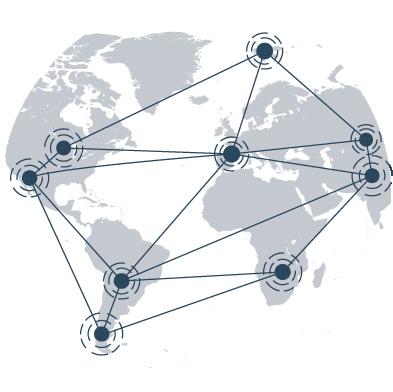
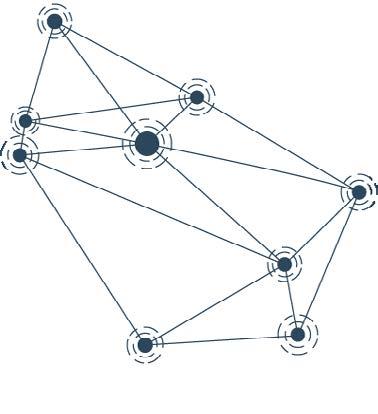

Dozens of teleECHO™ programs addressing common complex conditions take place every week—and their reach extends far beyond New Mexico. Global interest is mounting. ECHO programs operate in North and South America, Europe, Australia, Africa and Asia.
Replicating the ECHO model across the U.S. dramatically increases the number of community partners participating in ECHO, enabling more people in rural and underserved communities to get the expertise they need.
215+ U S Partners
130+ lobal Partners
For more information on Project ECHO visit: echo.unm.edu
For more information on Project ECHO visit: echo.unm.edu


FREE ebook ‘Endometriosis and Pelvic Pain’ by pelvic pain experts Dr Susan Evans and Deborah Bush for every clinician who completes the survey! Usually retails for $27.50!
We are looking for mental health clinicians who use psychological or talk-based therapies with women who have chronic pelvic pain conditions. We are interested in finding out what clinicians use and find effective.
The information sheet, consent form and survey can be accessed using the this link
Your contribution will help us form a better evidence base for psychological interventions for women with chronic pelvic pain conditions. This project is part of a PhD project at the University of South Australia.
Participation is voluntary and your responses will be de-identified and kept confidential. This project has ethics approval from the University of South Australia (ID: 202576).
If you have any further questions about this survey, contact information can be found at the end of the information sheet in the survey.
We are truly grateful for your time. Your responses have the potential to provide valuable contributions to both research and clinical practice in this area.
Best Wishes,
Tiffany Brooks


Dr Marc Russo and the PAIN2020 Committee invite you to join us at PAIN2020, the only meeting addressing pain management held in Sydney this year!




ber 2020 More

Expressions of interest online at: dcconferences.com.au/aps2021
REGISTRATIONS OPEN
4 NOVEMBER 2020
DEADLINES
Topical Sessions 28 September 2020 Free Papers & Posters 27 October 2020 Rising Star Award 27 October 2020 Early Bird Registration 23 February 2021
INCLUDING
Pre-Conference Workshops
Topical Sessions
Trainee Session
Extensive Industry Exhibition
Sponsored Sessions
Discipline Sub Group Meetings
Welcome Reception Conference Gala Dinner
JOIN US ONLINE
#AusPainSoc
Australian.Pain.Society
@AusPainSoc
For sponsorship and exhibition opportunities or more information please contact the APS Conference Secretariat
DC Conferences Pty Ltd
P: 61 2 9954 4400
E: aps2021@dcconferences.com.au

W: dcconferences.com.au/aps2021
Allan Basbaum is a professor and Chair of the Department of Anatomy at the University California San Francisco, USA. His research addresses the molecular mechanisms that underlie the generation of persistent pain after tissue or nerve injury.

Siri Leknes is a Professor of Social and Afective Neuroscience at the University of Oslo, Norway and a Senior Researcher at Oslo University Hospital. Her lab, the Leknes Afective Brain lab (LAB lab) studies how the brain and body give rise to pleasurable and painful feelings, and how these feelings are connected to decisions and behaviour.
Amanda C de C Williams is Reader (Associate Professor) in clinical health psychology at University College London; consultant clinical psychologist at the Pain Management Centre, University College London Hospital, UK; and research consultant for the International Centre for Health and Human Rights.





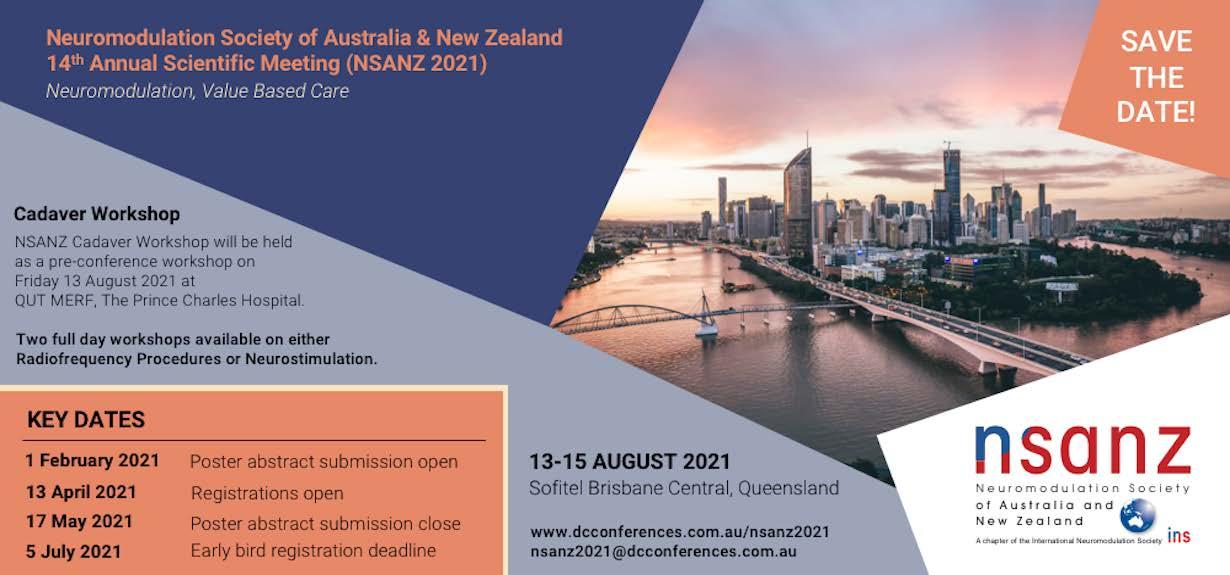
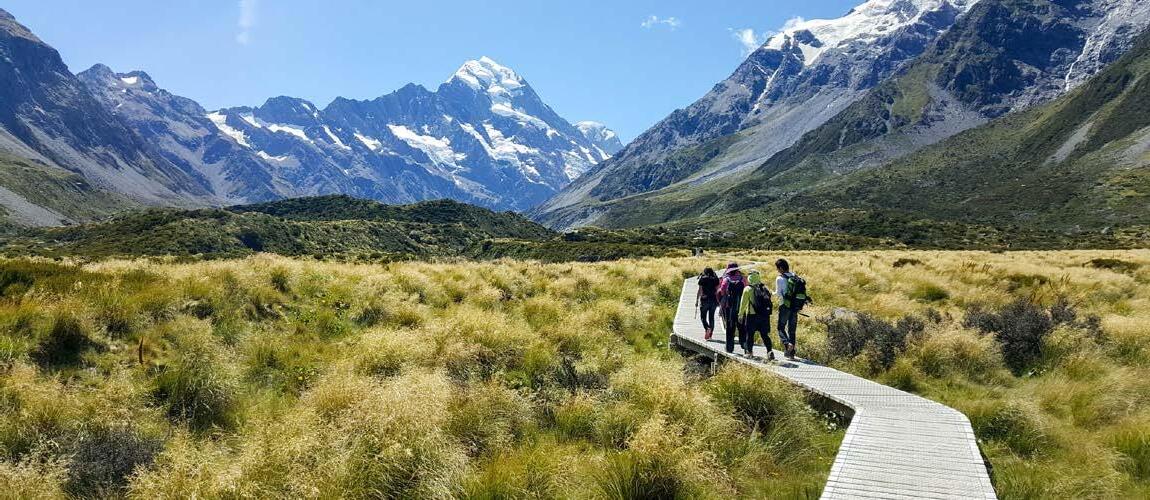


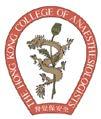

• ACSQHC User Guide for the Review of Clinical Variation in Health Care
This user guide supports clinicians to deliver appropriate care, including using data to identify unwarranted variation: https://www.safetyandquality.gov.au/publications-and-resources/resourcelibrary/nsqhs-standards-user-guide-review-clinical-variation-health-care
Other items of interest for our members:
• Latest opioids data from the Australian Bureau of Statistics: https://www.abs.gov.au/ausstats/ abs@.nsf/MediaReleasesByCatalogue/CC21BEAE2026450DCA25847F0013A28F?OpenDocument
• Australia’s annual overdose report 2019: http://www.penington.org.au/australias-annual-overdose-report-2019/
• The Third Australian Atlas of Healthcare Variation https://www.safetyandquality.gov.au/atlas
• Painaustralia eNewsletter latest issue, available online at http://www.painaustralia.org.au/media/enews
• ePPOC: electronic Persistent Pain Outcomes Collaboration
For more information about ePPOC, refer to the website: http://ahsri.uow.edu.au/eppoc/index.html
• PainHEALTH website http://painhealth.csse.uwa.edu.au/
• Stanford University
CHOIR Collaborative Health Outcomes Information Registry: https://choir.stanford.edu/
• Opioid Podcasts for GPs
20 week series from the Hunter Postgraduate Medical Institute: http://www.gptraining.com.au/recent-podcasts
• Airing Pain
Pain resources via an online radio show produced by Pain Concern, a UK registered Charity: http://painconcern.org.uk/airing-pain/
• Digital Health Guide
Developed by Primary Health Network Tasmania: https://digitalhealthguide.com.au/Account/LogOn?ReturnUrl=%2fSpecialtyFormulary%2f2 At login, Username: connectingcare, Password: health
• Indigenous Resources
New webpage on the APS website aggregating Indigenous resources: https://www.apsoc.org.au/Indigenous-Resources
NPS MedicineWise resources:
• Choosing Wisely Australia – News & media: https://www.choosingwisely.org.au/news-events
• Over the counter codeine – changes to supply: https://www.nps.org.au/medical-info/clinical-topics/over-the-counter-codeine-changes-to-supply
• Medicines with codeine – what you need to know:
https://www.nps.org.au/medical-info/consumer-info/medicines-with-codeine-what-you-need-to-know
TGA
• Codeine information hub: https://www.tga.gov.au/codeine-info-hub
NSW Agency for Clinical Innovation resources:
• Brainman and Pain Tool Kit translations, SEP15:
http://www.aci.health.nsw.gov.au/chronic-pain/translated-resources
• Pain Management Resources: http://www.aci.health.nsw.gov.au/resources/pain-management
• Quicksteps to Manage Chronic Pain in Primary Care:
http://www.aci.health.nsw.gov.au/chronic-pain/health-professionals/quick-steps-to-managechronic-pain-in-primary-care
- Built into Quicksteps: “How to de-prescribe and wean opioids in general practice”:
http://www.aci.health.nsw.gov.au/chronic-pain/health-professionals/quick-steps-to-managechronic-pain-in-primary-care/how_to_de-prescribe_and_wean_opioids_in_general_practice
• A list of helpful apps for consumers and clinicians now available at: http://www.aci.health.nsw.gov.au/chronic-pain/health-professionals/management-of-chronic-pain
• Chronic Pain in the ED: https://www.aci.health.nsw.gov.au/networks/eci/clinical/clinical-resources/ clinical-tools/pain-management/chronic-pain-in-the-ed
Dr Ahmed Al Atraqchi Neurosurgery
Ms Victoria Arton Nursing
Dr Kate Drummond Pain Medicine Physician
Dr Andrew Horwood General Practice
Dr Anju Tessa James Pain Medicine Physician
These dates and events are current at the time of publication. Due to the current health concerns with COVID-19, we recommend you make your own inquiries before planning to attend
1-5 September 2020
International Spinal Cord Society Online, Virtual Conference
https://www.iscosmeetings2020.org
14-15 September 2020
Occupational Therapy Australia
2020 Virtual OT Exchange, Virtual, Interactive Conference
https://www.otausevents.com.au/ otexchange2020/
17 - 19 September 2020
Australian & New Zealand Society of Palliative Medicine ANZSPM
Pullman Auckland, Auckland, New Zealand https://willorganise.eventsair.com/2020anzspm-conference/
15 - 17 October 2020
International Neuromodulation Society TBA, Paris, France https://e-ins.org/
16-18 October 2020
Australian Psychological Society Online, Virtual, Online Conference https://www.psy2020.com.au
4 -7 November 2020
Wounds Australia
Brisbane Convention and Exhibition Centre, Brisbane, QLD https://wounds2020.com.au/?utm_ source=australianpainsociety&utm_ medium=banner&utm_campaign=website
6-8 November 2020
European Pain Federation EFIC Online, Virtual, Online Conference https://europeanpainfederation.eu/virtual-paineducation-summit/
11 -13 November 2020
Clinical Oncology Society of Australia (COSA) Convention Centre, Brisbane, QLD https://www.cosa2020.org/
14-15 November 2020
Convenor - Dr Marc Russo
Hyatt Regency, Sydney, NSW https://dcconferences.eventsair.com/pain2020/
16-28 November 2020
RACGP - GP20
Satellite events in each Capital City, Hybrid Interactive, Online Conference https://www.racgp.org.au/gp20/gp20-home
24-27 February 2021
Australian College of Rural and Remote Medicine (ACRRM) and Rural Doctors Association of Australia (RDAA)
The Crowne Plaza, Hunter Valley, NSW
https://rma.acrrm.org.au/covid-19-update
4-6 March 2021
Exercise & Sports Science Australia (ESSA)
Perth Convention & Exhibition Centre, Perth, WA http://researchtopractice2020.com.au
12 -14 March 2021
Australia New Zealand Headache Society
Sofitel Wentworth Hotel , Sydney , NSW https://anzheadachesociety.org/2020-anzhsheadache-annual-scientific-meeting/
18-20 March 2021
New Zealand Pain Society Annual Scientific Meeting 2021
Copthorne Hotel, Bay of Islands, New Zealand https://www.nzps2021.nz
9-11 April 2021
Spine Society of Australia
International Convention Centre, Sydney, NSW https://dcconferences.eventsair.com/ssa-2021/
18-21 April 2021
Australian Pain Society 41st Annual Scientific Meeting
National Convention Centre, Canberra, ACT https://www.dcconferences.com.au/aps2021/
30 April 2021
Faculty of Pain Medicine (FPM) Symposium
2021
Melbourne Convention and Exhibition Centre, Melbourne, VIC https://www.anzca.edu.au/events-courses/ events/fpm-events/fpm-national-events/2020faculty-of-pain-medicine-symposium
19-21 May 2021
Australian & New Zealand Society for Geriatric Medicine (ANZSGM)
Sofitel Melbourne on Collins, Melbourne, VIC http://www.anzsgmconference.org/
21-23 May 2021
Australian Psychological Society College of Clinical Psychologists
Sofitel Brisbane Central, Brisbane, QLD https://www.psychology.org.au/APS-CCLINConf/2020
22-25 June 2021
Rehabilitation Medicine Society of Australia and New Zealand (RMSANZ)
Gold Coast Convention and Exhibition Centre, Gold Coast, QLD https://www.dcconferences.com.au/ rmsanz2021/
23-25 June 2021
Occupational Therapy Australia
Cairns Convention Centre, Cairns, QLD https://www.otaus2021.com.au
27 June-1 July 2021
International Association for the Study of Pain (IASP)
TBA, Amsterdam, Netherlands
https://www.iaspworldcongress.org
13-15 August 2021
Neuromodulation Society of Australia & New Zealand (NSANZ)
Sofitel Brisbane Central, Brisbane, QLD https://www.dcconferences.com.au/nsanz2021/
21-23 October 2021
Australian Physiotherapy Association
Brisbane Convention and Exhibition Centre, Brisbane, QLD
https://australian.physio/pd/conferences-andmasterclasses
11-13 November 2021
Australian and New Zealand Association of Oral & Maxillofacial Surgeons
Hotel Grand Chancellor, Hobart, Tasmania https://www.anzaomsconference.com.au/
24-27 March 2022
IASP Pain in Childhood SIG
Cordis Hotel, Auckland, New Zealand http://www.ispp2022.nz/home.html
Vision:
All people will have optimal access to pain prevention and management throughout their life.
Mission:
The Australian Pain Society is a multidisciplinary association whose mission is to advance pain prevention, management and clinical practice.
Priorities:
In order to achieve our mission, the Australian Pain Society will provide:
• Education
• Advocacy
• Research
• Services and resources
• Membership
• Good governance and operations
President:
A/Prof Anne Burke

Central Adelaide Local Health Network
Royal Adelaide Hospital
Adelaide SA 5000
Tel: 08 7074 2835 Fax: 08 7074 6247
President-Elect:
Ms Trudy Maunsell
Acute Pain Service
Princess Alexandra Hospital
Woolloongabba QLD 4102
Tel: 07 3176 5547 Fax: 07 3176 5102
Secretary:
Dr Will Howard

VIC
Tel: 03 9496 3800
Treasurer
Mr Tim Austin
Camperdown Physiotherapy
Newtown NSW 2042
Tel: 02 9517 1787 Fax: 02 9516 2491
ACT Director:
Dr Andrew Watson



Calvary Hospital
Canberra ACT 2617
Tel: 02 6201 6352 Fax: N/A
NSW Director:
Dr Tim Ho

Inner West Pain Centre
RPA Medical Centre
Newtown NSW 2042
Tel: 02 9517 1764 Fax: 02 9517 1832
NT Director:
Ms Diann Black Recovery
Royal Darwin Hospital
Casuarina NT 0811
Tel: 08 8931 1029 Fax:08 8922 8325
QLD Director:
Mrs Joyce McSwan
Gold Coast Primary Health Network
Persistent Pain Program, QLD
Tel: 0412 327 795 Fax: 07 3539 9801
SA Director:
Dr Michelle Harris
Royal Adelaide Hospital and Lyell McEwin Hospital
Adelaide SA
Email: michelle.harris2@sa.gov.au
TAS Director:
Mrs Dinah Spratt
Physiotas Physiotherapy
Shearwater TAS 7307
Tel: 03 6428 7500 Fax: 03 6424 7811
VIC Director:
Dr Laura Prendergast Pain Service, Austin Health






Chronic Pain Clinic, Goulburn Valley Health VIC
Tel: 03 9496 3134 or 03 5832 3020
WA Director:
Mr Shadreck Tozana
Functional Revival and Perth WA
Tel: 0437 541 165
Immediate Past President:
Ms Fiona Hodson
Hunter Integrated Pain Service
John Hunter Hospital Campus
New Lambton NSW 2305
Tel: 02 4922 3435 Fax: 02 4922 3438
SPC Chair:
A/Prof Kevin Keay



Department of Anatomy
University of Sydney
Sydney NSW 2006
Tel: 02 9351 4132 Fax: 02 9351 2817
IASP Liaison:
Professor Michael Nicholas Pain Management Research Institute

Royal North Shore Hospital
St Leonards NSW 2065
Tel: 02 9926 7894 Fax: 02 9662 6279
Website: https://www.iasp-pain.org
Communications Coordinator:
A/Prof Anne Burke
Central Adelaide Local Health Network
Royal Adelaide Hospital
Adelaide SA 5000
Tel: 08 7074 2835 Fax: 08 7074 6247
Newsletter Editor:
Dr Lincoln Tracy
School of Public Health and Preventive Medicine
Monash University
Melbourne VIC 3004
Tel 03 9903 0288
Newsletter Assistant Editor:
Dr Joanne Harmon



School of Clinical and Health Sciences
University of South Australia
Adelaide SA 5000
Tel 08 8302 1442
PhD Scholarship Chair:
A/Prof Michael Farrell
Department of Medical Imaging and Radiation Services
Monash University
Clayton VIC 3800
Tel: 03 9905 6094 Fax: 03 9902 9500
Secretariat:
DC Conferences Pty Ltd
PO Box 637
North Sydney, NSW 2059
Tel: 02 9016 4343
Email: aps@apsoc.org.au
Website: www.apsoc.org.au